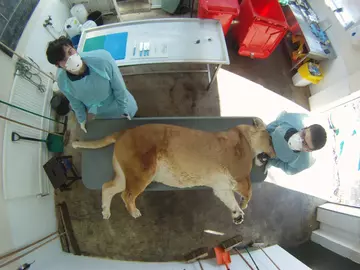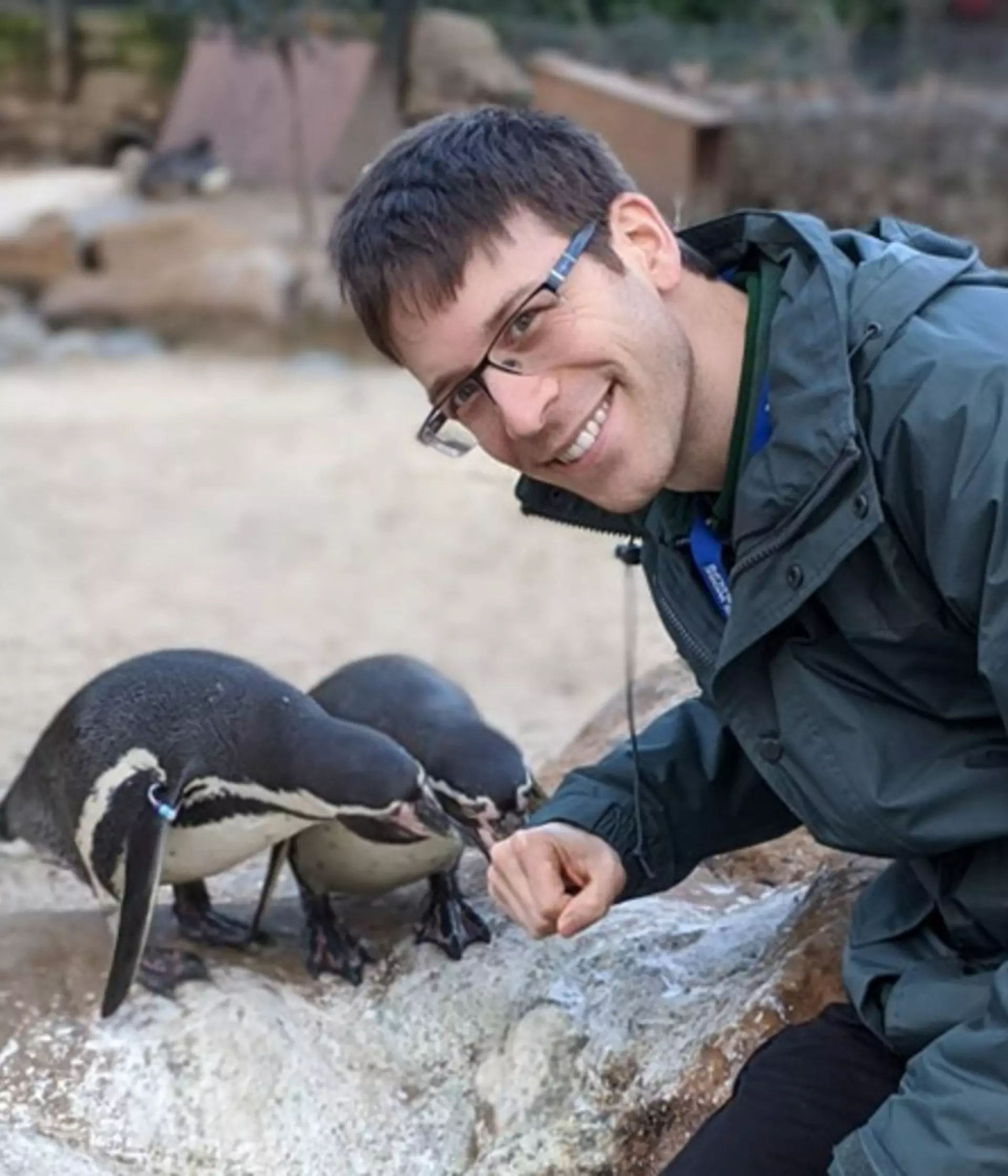
Pathology
Marine biology
Institute of Zoology
Zoological Society of London
London
NW1 4RY
Simon is the wildlife veterinary pathologist for ZSL, responsible for the gross and microscopic post mortem (PM) examinations of all animals from ZSL’s two zoos.
I am also the pathologist on the Cetacean Strandings Investigation Programme, performing PMs on stranded whales, dolphins, pinnipeds, sharks and turtles that strand in English and Welsh waters. As well as providing a clinical services, my work supports ZSL’s science and conservation missions by furthering our understanding of the pathology of endangered species; you cannot conserve a species if you do not understand why it is dying.

I also maintain an archive of pathological samples (mostly formalin fixed and frozen tissues) and pathological records dating back up to 100 years; access this archive is available to academics on request. I am a module leader on the MSc Wild Animal Health and Wild Animal Biology courses and supervise a variety of research projects on pathological topics. My personal research is focused on iron storage disease in captive bats and callitrichids.

2019-present: Wildlife veterinary pathologist at ZSL
2016-2019: APHA/RVC fellow in anatomic pathology (residency training), MVetMed at Royal Veterinary College
2014-2016: Molecular virologist in Marek’s disease virus at the Pirbright Institute
2011-2013: Non-stipendiary lecturer in pathology, New College, University of Oxford
2010-2014: Wellcome Trust scholar in Infection, Immunology and Translational Medicine (DPhil) at the University of Oxford
2004-2010: VetMB in veterinary medicine and MA in pathology at the University of Cambridge
O’Rourke, D. et al. (2023) ‘Isolation and molecular identification of nematode surface mutants with resistance to bacterial pathogens’, G3: Genes, Genomes, Genetics. Oxford University Press US, 13(5), p. jkad056.
Lean, F. Z. X. et al. (2023) ‘Tissue distribution of angiotensin-converting enzyme 2 (ACE2) receptor in wild animals with a focus on artiodactyls, mustelids and phocids’, One Health. Elsevier, 16, p. 100492.
Folly, A. J. et al. (2022) ‘Evidence for overwintering and autochthonous transmission of Usutu virus to wild birds following its redetection in the United Kingdom’, Transboundary and Emerging Diseases.
Bengtsson, R. et al. (2022) ‘The genomic epidemiology of Escherichia albertii’.
Lawson, B. et al. (2022) ‘Combining host and vector data informs emergence and potential impact of an Usutu virus outbreak in UK wild birds’, Scientific reports. Nature Publishing Group, 12(1), pp. 1–10.
AbdulJabbar, K. et al. (2022) ‘AI-powered pan-species computational pathology: Bridging clinic and wildlife care’, bioRxiv. Cold Spring Harbor Laboratory, pp. 2022–2003.
Cagan, A. et al. (2022) ‘Somatic mutation rates scale with lifespan across mammals’, Nature. Nature Publishing Group UK London, 604(7906), pp. 517–524.
Kane, D. et al. (2022) ‘Fungal dermatitis secondary to a hemipenal plug in a rhinoceros viper (Bitis nasicornis)’, Veterinary Record Case Reports, 10(2), p. e295.
Pereira, M. et al. (2021) ‘A retrospective study of morbidity and mortality identified at postmortem examination of captive langurs (trachypithecus spp) from six United Kingdom zoological institutions: a 19-year review’, Journal of Zoo and Wildlife Medicine. American Association of Zoo Veterinarians, 52(4), pp. 1123–1134.
Fiddaman, S. R. et al. (2022) ‘Adaptation and cryptic pseudogenization in penguin toll-like receptors’, Molecular Biology and Evolution. Oxford University Press, 39(1), p. msab354.
Lean, F. Z. X. et al. (2022) ‘Differential susceptibility of SARS-CoV-2 in animals: Evidence of ACE2 host receptor distribution in companion animals, livestock and wildlife by immunohistochemical characterisation’, Transboundary and Emerging Diseases, 69(4), pp. 2275–2286.
Morgan, R. E. et al. (2022) ‘Computed tomographic and magnetic resonance imaging of a coup contrecoup traumatic brain injury in a horse’, Equine Veterinary Education, 34(4), pp. e151–e156.
Blake, D. P. et al. (2021) ‘Genetic and biological characterisation of three cryptic Eimeria operational taxonomic units that infect chickens (Gallus gallus domesticus)’, International journal for parasitology. Pergamon, 51(8), pp. 621–634.
Mota, S. M. et al. (2021) ‘Cryptococcus Infection in Captive Callitrichids in the United Kingdom’, Journal of Comparative Pathology. WB Saunders, 183, pp. 1–8.
Ceccolini, M. E. et al. (2020) ‘Yersinia pseudotuberculosis infections in primates, artiodactyls, and birds within a zoological facility in the United Kingdom’, Journal of Zoo and Wildlife Medicine. American Association of Zoo Veterinarians, 51(3), pp. 527–538.
Folly, A. J. et al. (2020) ‘Detection of Usutu virus infection in wild birds in the United Kingdom, 2020’, Eurosurveillance. European Centre for Disease Prevention and Control, 25(41), p. 2001732.
Holmes, P. et al. (2019) ‘First report of dermatophilosis in wild European red squirrels (Sciurus vulgaris)’, Veterinary Record Case Reports. British Veterinary Association, 7(3), p. e000838.
Norgate, D. J. et al. (2019) ‘Clinical features, anaesthetic management and perioperative complications seen in three horses with pheochromocytoma’, Veterinary Record Case Reports. British Veterinary Association, 7(1), p. e000744.
Sadigh, Y. et al. (2018) ‘Gallid herpesvirus 3 SB-1 strain as a recombinant viral vector for poultry vaccination’, npj Vaccines. Nature Publishing Group UK London, 3(1), p. 21.
Miller, J. L. et al. (2016) ‘Minimal in vivo efficacy of iminosugars in a lethal Ebola virus guinea pig model’, PLoS One. Public Library of Science San Francisco, CA USA, 11(11), p. e0167018.
